
|
Now Playing

It Happened in 1926 . . .
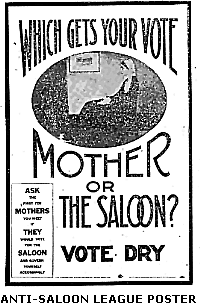 The Sixth Year of the Drought accounted for an unusual story on Capitol Hill. Dr. Samuel Harden Church, president of the Carnegie Institute of Technology, went before a senatorial committee and described the Demon Rum as "one of the greatest blessings that God has given to men out of the teeming bosom of Mother Earth." He also observed, with much nonchalance, that hip flasks were quite common among the students on his campus. A Dry witness then charged that Dr. Church had said those things only because he was miffed at the Prohibition Service for intercepting some honest-to-goodness liquor coming down from Canada for his own larder . . . U.S. Attorney Emory R. Buckner of New York put a figure on the nationwide bootleg trade:
The Sixth Year of the Drought accounted for an unusual story on Capitol Hill. Dr. Samuel Harden Church, president of the Carnegie Institute of Technology, went before a senatorial committee and described the Demon Rum as "one of the greatest blessings that God has given to men out of the teeming bosom of Mother Earth." He also observed, with much nonchalance, that hip flasks were quite common among the students on his campus. A Dry witness then charged that Dr. Church had said those things only because he was miffed at the Prohibition Service for intercepting some honest-to-goodness liquor coming down from Canada for his own larder . . . U.S. Attorney Emory R. Buckner of New York put a figure on the nationwide bootleg trade: 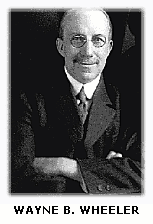 $3,600,000,000 a year . . . The Supreme Court split five-to-four to uphold the law limiting doctors' prescriptions of whiskey to one pint every ten
days per patient . . . President Coolidge told Congress we had to have teeth in the Volstead Act or else . . . The Drys said more people were buying their babies shoes now that they couldn't spend their money on alcohol . . . Wayne B. Wheeler, general counsel for the Anti-Saloon League of America, admitted that the League had paid some congressmen to lecture in the cause . . . Mrs. Mabel Walker Willebrandt said Prohibition was being enforced with increasing success. She was in charge of enforcement at the time . . . $3,600,000,000 a year . . . The Supreme Court split five-to-four to uphold the law limiting doctors' prescriptions of whiskey to one pint every ten
days per patient . . . President Coolidge told Congress we had to have teeth in the Volstead Act or else . . . The Drys said more people were buying their babies shoes now that they couldn't spend their money on alcohol . . . Wayne B. Wheeler, general counsel for the Anti-Saloon League of America, admitted that the League had paid some congressmen to lecture in the cause . . . Mrs. Mabel Walker Willebrandt said Prohibition was being enforced with increasing success. She was in charge of enforcement at the time . . .
�����������
* * *
 Gertrude Ederle, daughter of a New York delicatessen owner, swam the
treacherous twenty-two-mile English Channel in fourteen hours and thirty-one
minutes--the first woman to do it . . . The textile workers of Passaic, New Jersey, sixteen thousand strong, struck against a 10 percent pay cut. The strike, marked by much violence, lasted a year and both sides claimed victory . . . There were twenty-three lynchings during 1926 . . . Ford dropped the Model-T for the Model-A . . . The stock market dipped but came back strong . . . Dr. Ales Hrdlicka, the anthropologist, said a new type of American man was developing:
Gertrude Ederle, daughter of a New York delicatessen owner, swam the
treacherous twenty-two-mile English Channel in fourteen hours and thirty-one
minutes--the first woman to do it . . . The textile workers of Passaic, New Jersey, sixteen thousand strong, struck against a 10 percent pay cut. The strike, marked by much violence, lasted a year and both sides claimed victory . . . There were twenty-three lynchings during 1926 . . . Ford dropped the Model-T for the Model-A . . . The stock market dipped but came back strong . . . Dr. Ales Hrdlicka, the anthropologist, said a new type of American man was developing: 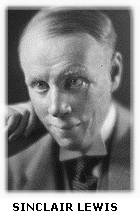 less spare, taller and also more sanguine . . . The first telephone calls between New York and London took place . . . The Navy added chewing gum to its ship's stores, ending a fifteen-year ban . . . The Massachusetts Supreme Court denied a new trial to Sacco and Vanzetti . . . Henry Ford put in the five-day week in his plants . . . Sinclair Lewis refused to accept the 1925 Pulitzer Prize for his novel, Arrowsmith. He said literary prizes tended to make writers "safe, polite, obedient, and sterile" and charged that less spare, taller and also more sanguine . . . The first telephone calls between New York and London took place . . . The Navy added chewing gum to its ship's stores, ending a fifteen-year ban . . . The Massachusetts Supreme Court denied a new trial to Sacco and Vanzetti . . . Henry Ford put in the five-day week in his plants . . . Sinclair Lewis refused to accept the 1925 Pulitzer Prize for his novel, Arrowsmith. He said literary prizes tended to make writers "safe, polite, obedient, and sterile" and charged that 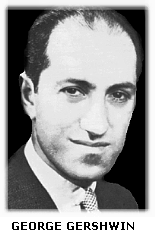 the judges weighed books less upon literary merit than upon the moment's code of good form . . . DuBose Heyward's Porgy came out. George Gershwin picked it up one night because he couldn't sleep. He read it through and wrote Heyward and said he would like to build an opera around the Catfish Row story sometime . . . John Erskine's The Private Life of Helen of Troy and Warwick Deeping's Sorrel & Son were No. 1 bestsellers but Hemingway's The Sun Also Rises and Faulkner's Soldier's Pay weren't . . . In non-fiction, Bruce Barton's The Book Nobody Knows joined The Man Nobody Knows on the lists. George A. Dorsey's Why We Behave Like Human Beings the judges weighed books less upon literary merit than upon the moment's code of good form . . . DuBose Heyward's Porgy came out. George Gershwin picked it up one night because he couldn't sleep. He read it through and wrote Heyward and said he would like to build an opera around the Catfish Row story sometime . . . John Erskine's The Private Life of Helen of Troy and Warwick Deeping's Sorrel & Son were No. 1 bestsellers but Hemingway's The Sun Also Rises and Faulkner's Soldier's Pay weren't . . . In non-fiction, Bruce Barton's The Book Nobody Knows joined The Man Nobody Knows on the lists. George A. Dorsey's Why We Behave Like Human Beings  also made it, along with Milton C. Work's Auction Bridge Complete . . .
The Book of the Month Club and the Literary Guild were started . . . In the musical, Americana, on Broadway, Helen Morgan did a torch song, "Nobody Wants Me," while sitting atop an upright piano. It would become her trademark . . . Fredric March appeared in The Devil in the Cheese, William Harrigan in The Great God Brown, Lee Tracy in Broadway, Lenore Ulric and Henry Hull in Lulu Belle, James Rennie in The Great Gatsby, Spencer Tracy in Yellow, Helen Hayes in What Every Woman Knows, Eugene and Willie Howard and Ann Pennington in George White's Scandals . . . Eva Le Gallienne opened her low-priced Civic Repertory Theatre on Fourteenth Street . . . In Hollywood, Marion Davies, riding high, felt the need of a hideaway on the beach. She bought two little homes on the Santa Monica shore and decided to build a hallway to connect them. It was going to cost $7,500 but Miss also made it, along with Milton C. Work's Auction Bridge Complete . . .
The Book of the Month Club and the Literary Guild were started . . . In the musical, Americana, on Broadway, Helen Morgan did a torch song, "Nobody Wants Me," while sitting atop an upright piano. It would become her trademark . . . Fredric March appeared in The Devil in the Cheese, William Harrigan in The Great God Brown, Lee Tracy in Broadway, Lenore Ulric and Henry Hull in Lulu Belle, James Rennie in The Great Gatsby, Spencer Tracy in Yellow, Helen Hayes in What Every Woman Knows, Eugene and Willie Howard and Ann Pennington in George White's Scandals . . . Eva Le Gallienne opened her low-priced Civic Repertory Theatre on Fourteenth Street . . . In Hollywood, Marion Davies, riding high, felt the need of a hideaway on the beach. She bought two little homes on the Santa Monica shore and decided to build a hallway to connect them. It was going to cost $7,500 but Miss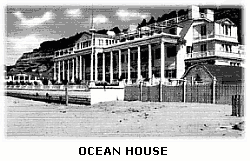 Davies got more ambitious ideas as the work progressed. Four years and $1,750,000 later the pretty blond star had herself a mansion that was one of the world's showplaces--and she was still building. She called the place Ocean House and Davies got more ambitious ideas as the work progressed. Four years and $1,750,000 later the pretty blond star had herself a mansion that was one of the world's showplaces--and she was still building. She called the place Ocean House and
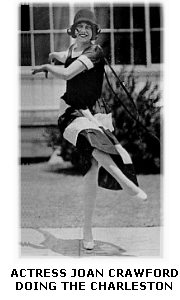 imported furnishings--and guests--from all over the world. In time, practically completed, fully furnished and staffed by an army of 32 servants, Ocean House represented a tidy $7,000,000 investment. Hollywood society frolicked over the premises for fifteen years before Miss Davies, long-time friend of William Randolph Hearst and shareholder in some of his publishing enterprises, moved to a smaller mansion in Beverly Hills. Eventually Ocean House went to rot and ruin. Some of the buildings--there were five when Miss Davies called off the architect--faced demolition in 1956 to make way for a motel . . . The Charleston was the rage. Hope Hampton demonstrated the dance on the deck of the Leviathan for a group of Oxford students and Gimbels basement did a rush business in "Charleston flare
dresses." Price: $1.58. imported furnishings--and guests--from all over the world. In time, practically completed, fully furnished and staffed by an army of 32 servants, Ocean House represented a tidy $7,000,000 investment. Hollywood society frolicked over the premises for fifteen years before Miss Davies, long-time friend of William Randolph Hearst and shareholder in some of his publishing enterprises, moved to a smaller mansion in Beverly Hills. Eventually Ocean House went to rot and ruin. Some of the buildings--there were five when Miss Davies called off the architect--faced demolition in 1956 to make way for a motel . . . The Charleston was the rage. Hope Hampton demonstrated the dance on the deck of the Leviathan for a group of Oxford students and Gimbels basement did a rush business in "Charleston flare
dresses." Price: $1.58.
[ previous page ]
[ back to top ]
[ next page ]
copyright © Estate of Paul Sann
NOTICE OF COPYRIGHT
|
